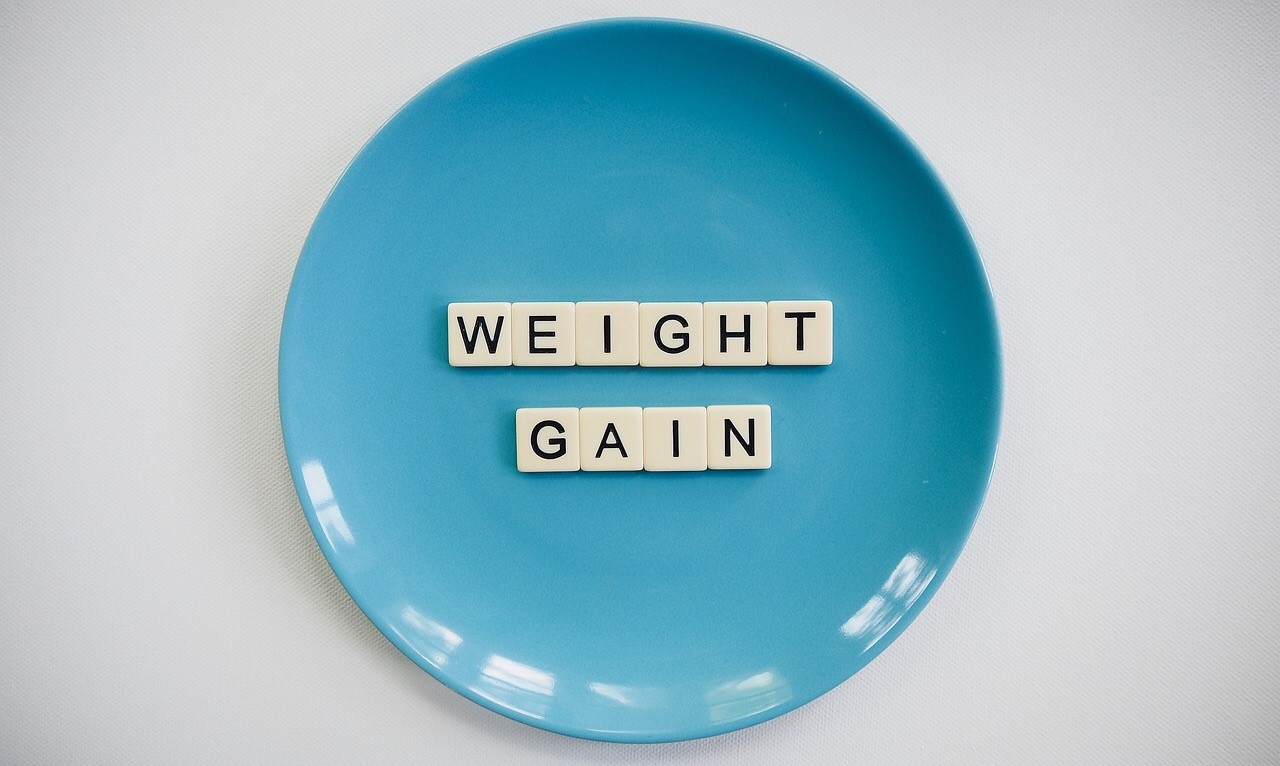
Weight Gain and The Glucose-Insulin System
By Dr Joseph J Collins, ND, RN
By Dr Joseph J Collins, ND, RN
This article is part of the Blood Sugar Health Educational Module
As noted, excessive glucose is stored as triglycerides. The excessive triglycerides are stored in adipose tissue. Even though the body can store some of the excess glucose as glycogen, it only stores a limited amount. Adults weighing about 150 pounds may store up to 120 grams (4 ounces) of glycogen in their liver, and about 400 grams (about 14 ounces) in their muscles. At four calories per gram, that means the body can only store about 2,080 calories as glycogen. The rest gets stored as fat.
Most excessive glucose is stored as triglycerides and adipose tissue. It takes 3,500 calories to create one pound of fat. If a person consumes 250 excessive calories per day, they will gain two pounds per month, which is 24 pounds per year.
Since each gram of carbohydrate is four calories, it only takes 63 grams of extra carbohydrates to have 250 extra calories per day. Even though protein also has 4 calories per gram, the process of converting protein to glucose (gluconeogenesis) requires energy. For most common proteins, 50 - 80 g of glucose can be derived from 100 g of ingested protein.
The “Dietary Guidelines for Americans, 2015- 2020” still recommends that carbohydrates make up 45 to 65 percent of your total daily calories. However, excessive blood sugar levels and weigh gain may be easier to control if carbohydrate intake is decreased and protein intake is increased.
The very-low-carbohydrate and high-fat ketogenic diet appears to be effective for rapid weight loss. However, the ketogenic diet may cause an increased risk for hypoglycemia (low blood sugar) in some people.
A good option is to decrease carbohydrate calories down to 45 percent of total calorie needs before trying the ketogenic diet. This helps increase awareness of how many carbohydrates a person has really been eating. By dropping down to 45 percent, the person is still within the “Dietary Guidelines”, but are often consuming much fewer carbohydrates, which help control excessive blood sugar and helps with weight loss. Simply lowering the percentage of calories that are from carbohydrates is effective in weight loss for many people.
As noted, it takes energy to convert protein to glucose. So, by consuming less carbohydrates and more protein, there will be less glucose produced form any excessive calories.
The glucose-insulin system prevents high blood sugar by secreting more insulin, which converts excessive glucose into glycogen or triglycerides. The body only stores a limited amount of glycogen. The liver only stores about 100 grams of glycogen, which is equal to about 400 calories. Muscles can only store up to 500 grams of glycogen, which is equal to about 2,000 calories.
After it has stored its limit of glycogen, all other excessive calories get converted into triglycerides. The triglycerides are predominantly stored in adipose tissue, which results in an increase in the amount of body fat that a person will be carrying due to excessive calorie intake.
The glucose-insulin-system plays a primary role in converting excessive calories into adipose tissue.
All the herbs used in GlucoQuench™ have been shown to have anti-obesity properties through various mechanisms including the increase of leptin levels (resulting in increased satiety), the decrease of ghrelin levels (resulting in decreased appetite), and the decrease of cortisol (resulting in decreased fats storage).
Most excessive glucose is stored as triglycerides and adipose tissue. It takes 3,500 calories to create one pound of fat. If a person consumes 250 excessive calories per day, they will gain two pounds per month, which is 24 pounds per year.
Since each gram of carbohydrate is four calories, it only takes 63 grams of extra carbohydrates to have 250 extra calories per day. Even though protein also has 4 calories per gram, the process of converting protein to glucose (gluconeogenesis) requires energy. For most common proteins, 50 - 80 g of glucose can be derived from 100 g of ingested protein.
The “Dietary Guidelines for Americans, 2015- 2020” still recommends that carbohydrates make up 45 to 65 percent of your total daily calories. However, excessive blood sugar levels and weigh gain may be easier to control if carbohydrate intake is decreased and protein intake is increased.
The very-low-carbohydrate and high-fat ketogenic diet appears to be effective for rapid weight loss. However, the ketogenic diet may cause an increased risk for hypoglycemia (low blood sugar) in some people.
A good option is to decrease carbohydrate calories down to 45 percent of total calorie needs before trying the ketogenic diet. This helps increase awareness of how many carbohydrates a person has really been eating. By dropping down to 45 percent, the person is still within the “Dietary Guidelines”, but are often consuming much fewer carbohydrates, which help control excessive blood sugar and helps with weight loss. Simply lowering the percentage of calories that are from carbohydrates is effective in weight loss for many people.
As noted, it takes energy to convert protein to glucose. So, by consuming less carbohydrates and more protein, there will be less glucose produced form any excessive calories.
The glucose-insulin system prevents high blood sugar by secreting more insulin, which converts excessive glucose into glycogen or triglycerides. The body only stores a limited amount of glycogen. The liver only stores about 100 grams of glycogen, which is equal to about 400 calories. Muscles can only store up to 500 grams of glycogen, which is equal to about 2,000 calories.
After it has stored its limit of glycogen, all other excessive calories get converted into triglycerides. The triglycerides are predominantly stored in adipose tissue, which results in an increase in the amount of body fat that a person will be carrying due to excessive calorie intake.
The glucose-insulin-system plays a primary role in converting excessive calories into adipose tissue.
All the herbs used in GlucoQuench™ have been shown to have anti-obesity properties through various mechanisms including the increase of leptin levels (resulting in increased satiety), the decrease of ghrelin levels (resulting in decreased appetite), and the decrease of cortisol (resulting in decreased fats storage).
Summary:
Excessive intake of calories may be converted to triglycerides, which result in increased storage of adipose tissue, and increased body fat.
GlucoQuench™ contains herbs that have anti-obesity properties through various mechanisms and can help decrease obesity. Healthy eating, with lower percentage of calories from carbohydrates is also required.
Excessive intake of calories may be converted to triglycerides, which result in increased storage of adipose tissue, and increased body fat.
GlucoQuench™ contains herbs that have anti-obesity properties through various mechanisms and can help decrease obesity. Healthy eating, with lower percentage of calories from carbohydrates is also required.
References and Addition Reading
Reviewed & Updated: 07/20/2019
